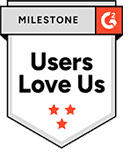As organizations worldwide prepare to transition to the new lease accounting standards, FASB ASC 842 & IASB IFRS 16, accounting teams are anticipating a heavy workload to prepare for the FASB & IASB lease accounting changes— and it might be more than they’re prepared to handle.
The problem? Some organizations are delaying the inevitable. While many have a plan in place for adoption, others are significantly underestimating what’s needed to ensure compliance, including the guidance and support of outside resources. The new IFRS leasing standard will go into effect for most public companies by early 2019. As 2017 winds down, the demand for resources will increase while expert vendor availability tightens up. And you can guess how that will impact the cost of acquiring these resources.
Getting started on your FASB and/or IASB transition as soon as possible by appointing your internal and external teams, rallying your people and choosing lease accounting software that’s quick and easy to implement can make all the difference in being ready for the IFRS new lease standard by the effective date — and controlling how much it costs to get you there.
Preparation for FASB & IASB lease accounting changes: No better time than the present
According to a recent article in the Journal of Accountancy, 31 percent of executives say their companies are unprepared to comply with the new Financial Accounting Standards Board (FASB) lease rules changes. Similarly, a survey by PwC and commercial real estate services firm CBRE found almost one-fourth (23%) of respondents admitting that they hadn’t begun their lease accounting IFRS 16 adoption efforts yet.
The delay is somewhat understandable. Many organizations are still regrouping from the implementation of FASB’s new revenue recognition standard, which applies to annual reporting periods beginning after December 15, 2017, and may not be ready to tackle yet another major FASB-related project.
However, creating an inventory of your leases will involve many departments beyond simply your accounting team, so you need to be realistic about the time, money and resources it will require.
Securing internal buy-in for FASB & IASB lease accounting changes
To be ready for FASB and/or IASB adoption by the deadline, preparation starts with determining the internal bandwidth to be dedicated specifically to the IFRS 16 and ASC 842 transition and putting together a mosaic of what this effort will look like. Consider the following points:
- Who or what team is going to manage the project?
- How will you assemble and abstract the data?
- What resources will you need for implementation and training?
As outlined in a previous post, your accounting department needs a solid collaboration with real estate, procurement and IT to ensure accurate lease data can be collected, calculated, shared and integrated for complying with the new lease standard. These teams need to work together, drawing knowledge from each department’s expertise, to fill in the missing pieces and create a comprehensive strategy for adoption of FASB & IASB lease accounting changes— including identifying the external resources you’ll need.
Take your accounting department, for example. Early on, you should seek the guidance of an audit or advisory partner as your first touchpoints to help lay the preliminary groundwork for your adoption plan of attack. Schedule a meeting with your advisory partner or a trusted lease accounting technology vendor.
- Your advisory partner will give you both information and advice that will help in making policy decisions regarding ASC 842 & IFRS 16 adoption.
- Your lease accounting vendor can give you an overview of how a system works and provide a look at what data you should start thinking about collecting to get compliant with FASB & IASB lease accounting changes.
As many organizations are discovering, it takes much more than simply your accounting team to plan for the coming changes.
Lining up the right external resources
As time passes, the competition for external vendors — already a limited pool — is exponentially increasing. To make sure your company has the help it needs for adoption of ASC 842 & IFRS 16, it is important to secure your resources now and avoid settling for a less-than-ideal fit when it comes to crunch time.
The earlier you start the search process, the greater the benefits:
- More power over scheduling and vendor selection.
- A better picture of what to expect during the process.
- Guidance and best practices in terms of the overall project and any integration implications.
- A clearer understanding of what your policy decisions need to be.
- More control over your software implementation timeline.
The benefits of a lease accounting system
With your teams working together on the FASB & IASB lease accounting changes, is there still a need to purchase new technology? Absolutely. Unless you want the hassle of running calculations every time you need to produce a report — whether quarterly or annually — lease accounting software will improve the efficiency and accuracy of the process by updating and automating recurring reporting. And the sooner you have automation in place, the sooner your company will be ready for FASB & IASB adoption.
The new standards mean a more complex balance sheet with more data to collect and process, increasing the volume of accounting you need to do. Many companies are adding hundreds of asset leases (at a minimum) onto the balance sheet. A lease accounting system will keep those leases and related data in an accessible, centralized location, allowing you to run calculations and report on your enterprise lease information as needed.
Lease accounting software will also make the adoption process proceed more quickly, so your staff can return their focus to their primary responsibilities.
The bottom line? Protect yours
Make no mistake: the FASB and IASB lease accounting changes call for significant effort — and more complex and time-consuming analyses than many businesses are anticipating.
With time drawing short for FASB & IASB adoption and expert help becoming more difficult to engage, the process will continue to grow in complexity and cost the longer you delay. By preparing now, and leveraging available technology and resources, you will gain a clearer idea of what to expect in the coming months — and ultimately, save money and gain peace of mind without the last-minute scramble as the deadline nears.
If you haven’t already, start the discussion today to enact a plan for a smooth adoption of the new standards.























